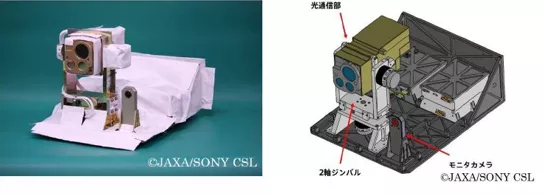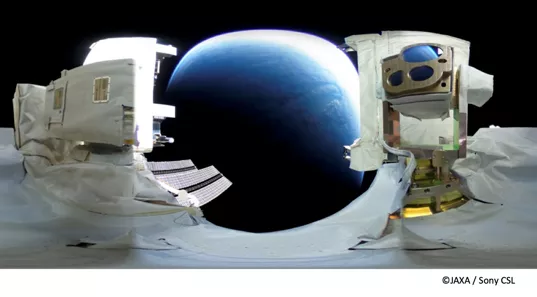"At present, there are about 12000 satellites in space, and this number is expected to increase in the future. The amount of data used in orbit is also increasing year by year, but the number of available radio waves is limited." Said kuangping Iwamoto, President of Sony space communications, "Low earth orbit (LEO) satellites need to communicate with the ground, so a large number of communication facilities are needed for real-time communication. This is the problem, because these satellites can communicate with them only when they pass directly over the ground station. In addition, the demand for radio wave frequency permission and how to realize the low energy consumption of communication equipment required by small satellites (such as microsatellites) are also urgent problems to be solved."
In order to solve these problems, SSC plans to develop small optical communication equipment to provide relevant services, and connect microsatellites in low earth orbit through laser beams. SSC plans to provide this optical communication equipment as a service to companies engaged in satellite development. By using optical communication, SSC aims to achieve high-speed communication between small devices. Physically, this is difficult for traditional radio communication, because traditional communication requires large antennas and high power output. In addition, by constructing an optical communication network not only between satellites and the ground, but also between satellites in orbit, SSC aims to realize real-time communication from any place on the ground to any satellite in space. Optical communication is also easier to implement than traditional RF communication, because they do not need a license in a specific field like radio communication.
By providing easy-to-use inter satellite communication services, SSC aims to increase the traffic in space to build an Internet communication network covering earth, space, real-time services and other applications.
Overview of Sony space communications
-Name: Sony space communications
-Headquarters: 2207 Bridgepointe Pkwy, San Mateo, CA 94404
-Representative: kuangping Iwamoto, President
-Date of establishment: June 1st, 2022
-Shareholder: Sony Corporation 100%
On cosmic optical communication
Sony Computer Science Laboratory, a subsidiary of Sony Group, has been researching and developing optical communication systems to achieve long-distance high-speed data communication that can be carried on microsatellites. Through the application of the optical disc technology developed by Sony Group in the development and production of CD players and other products over the years, it aims to achieve ultra small, lightweight, mass-produced optical communication equipment that can operate in such a harsh environment as space.
In 2020, Sony cooperated with Japan Aerospace Exploration Agency (JAXA) to install soliss (small satellite optical communication device) on the Japanese experimental module "Hope" of the international space station (ISS). It has established a two-way laser communication link with the space optical communication ground station of the National Institute of information and communication technology (NICT) in Japan, and successfully transmitted high-definition image data through Ethernet protocol. In 2021, the experimental device successfully established an optical downlink from space to the commercial optical ground station of the Greek cosberg satellite service company.

Soliss device diagram

High definition images transmitted by soliss through optical communication
In 2022, in cooperation with JAXA, Sony successfully conducted a complete data file transmission experiment in a simulated error prone communication environment, which will become the technical basis for providing Internet services through optical communication between the stratosphere and Leo.
SSC aims to promote the wide application of cosmic optical communication and contribute to improving people's living convenience by expanding social and economic activities.